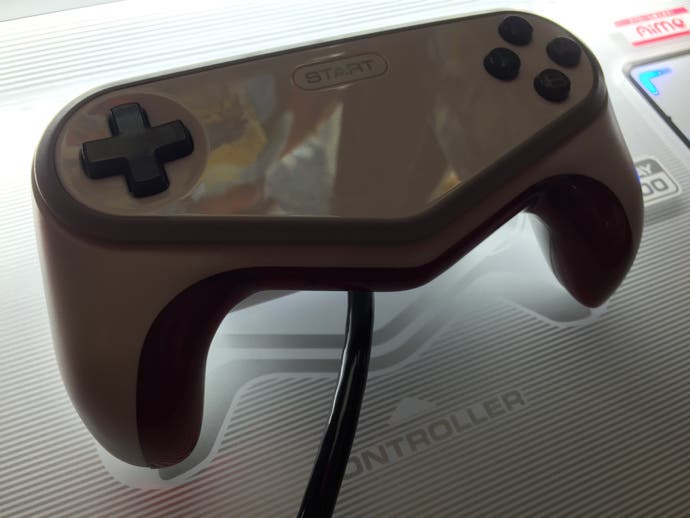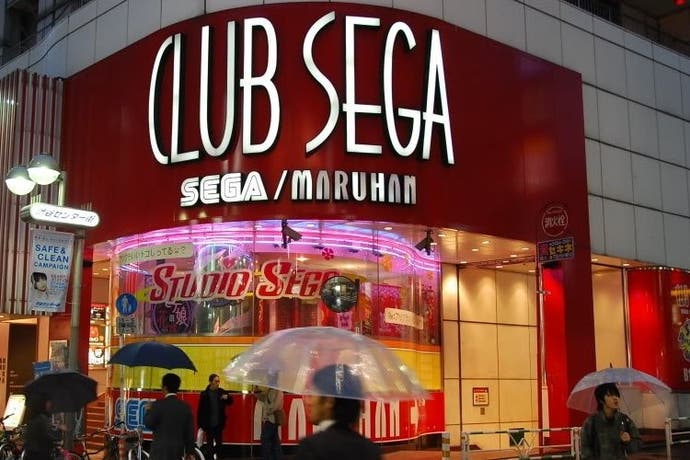I think I just fell in love with Japanese arcades again
Video podcast and impressions from Tokyo's arcade scene.
Martin and Aoife are in Japan for the Tokyo Game Show this week, and they spent their first day exploring the city's arcade scene, as well as paying their respects to Akihabara's retro gaming temple, Super Potato. Below you'll find a video podcast they recorded about their jaunt, plus seasoned arcade-watcher Martin's thoughts about the current state of Japanese arcades.
Are Japanese arcades getting their groove back? In all honesty, they never really lost it - it's just that the beat of more mainstream Japanese arcades has changed so substantially in recent years, it's been hard for visiting outsiders to appreciate what's happened and how they've evolved. There's an ideal of the Japanese arcade - the one where hundreds of candy cabinets are lined up, all playing curios and half-remembered treasures from our youth - that's been sidelined to multi-storey affairs in Akihabara, places where older players can go and reminisce while sinking 100 yen coins in well preserved classics. The game stations of Taito and Sega, though, which crop up in busy hubs like Shibuya and Shinjuku, have become stranger, more alienating places, where indecipherably dense games like Border Break and Lords of Vermillion make it hard for travelling tourists to get a hold on what makes these places special.
Over the past five years, when I've been lucky enough to spend time in Japan courtesy of Eurogamer for the Tokyo Game Show, I've become increasingly dejected about the arcade scene: Shibuya Kaikan Monaco, a smoky dive where all the yellowed candy cabinets asked for only 50 yen in exchange for a run at the finest collection of fighters and shmups, was an amazing discovery the first year, but in 2013 the shutters were drawn and now the building's been completely demolished. It seemed indicative of the whole scene. Finding traditional games in places like Club Sega or Taito Game Station has been harder and harder, with UFO catchers taking up more and more space while even the larger venues themselves seem to be dwindling in number.

So what's changed this year? Part of it's been showing our own Aoife Wilson around favourite haunts on her first visit to Tokyo, and being able to see it all through fresh eyes again. But a larger part of it is how much more accessible it all seems now. Pokken Tournament, Namco's pugilistic take on one of Japan's most globally renowned franchises, Pokémon, has now rolled out across arcades, and who doesn't want to get involved in some hot Pikachu versus Charizard action? (Me, actually, seeing as Aoife tore my Pikachu to shreds.) There's something refreshingly open-armed and inclusive about this fighter, in its use of a bulky gamepad over an arcade stick and in its simple inputs, with its combat all about stringing together specials and spacing in the small circular arenas it provides.
There are other recognisable names too. Luigi's Mansion Arcade, a re-tooling of Nintendo's offbeat ghost-catching series by Capcom, finds itself a place in most venues, and enjoyably odd it is too. It's not the most nuanced of games - the assets seem to be lifted directly from the 3DS game and given a little polish so they don't look too out of place on the colossal screen your nose almost scrapes against - but that doesn't really matter when you're given your own bulky plastic Poltergust 3000 to ensnare spirits, flashing lights to temporarily stun them before wrestling them in.
Elsewhere, it's disappointing that Street Fighter 5 has yet to make its way to location tests - how strange it is to have sampled Capcom's latest in my own living room a couple of weeks ago and to come to Tokyo and find it entirely absent from the scene that birthed it. Telling, too, that one of the most iconic arcade games is now leading with console - although Tekken 7, which is currently pulling in big numbers a few months after its release over here, seems happy to fill the void.

None of that's what's made me fall for Japanese arcades all over again, though: it's the rediscovery of an old staple I've been too blinkered in my pursuit of a Xexex or a Salamander to fully appreciate in the past. A new wave of rhythm action games, spearheaded by Sega's relatively seasoned Maimai and its more recent contender Chuntithm, place the contemporary Japanese arcade in its best light: as a brilliantly social space, where friends can get together and dick around to the strains of some of the most infectious J-Pop around. It helps that some of that J-Pop's familiar even to an outsider like me, with Persona's hyper-lounge providing a large chunk of the soundtrack. Going for a one-credit run in Thunder Cross 2 is one thing; necking a couple of cans of umeshu, getting lost in impossibly high energy music and then hitting the purikura is quite another, even if it's not particularly becoming of a man in his thirties.
What I really love about it, though, is stepping back and witnessing the mad theatre of it all: seeing a scrawny kid in his early 20s sink a couple of credits, pull on a pair of white gloves and take on a mean stance before unleashing all kinds of havoc on a Maimai cabinet, his wild dance choreographed by the flashing lights of the machine. High-level rhythm action play will always command a special space in my heart (there are few greater sights in gaming than seeing friend of Eurogamer and Kotaku UK editor Keza MacDonald take down a Jubeat cabinet at full force), and I adore how it takes something so often perceived as casual and makes it utterly, resolutely hardcore. It's something Japan's always excelled at, thinking about it, and what a rush to discover that's as true now as ever before in Tokyo's arcades.


